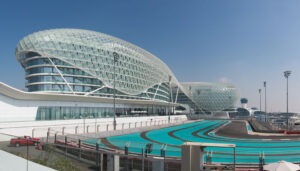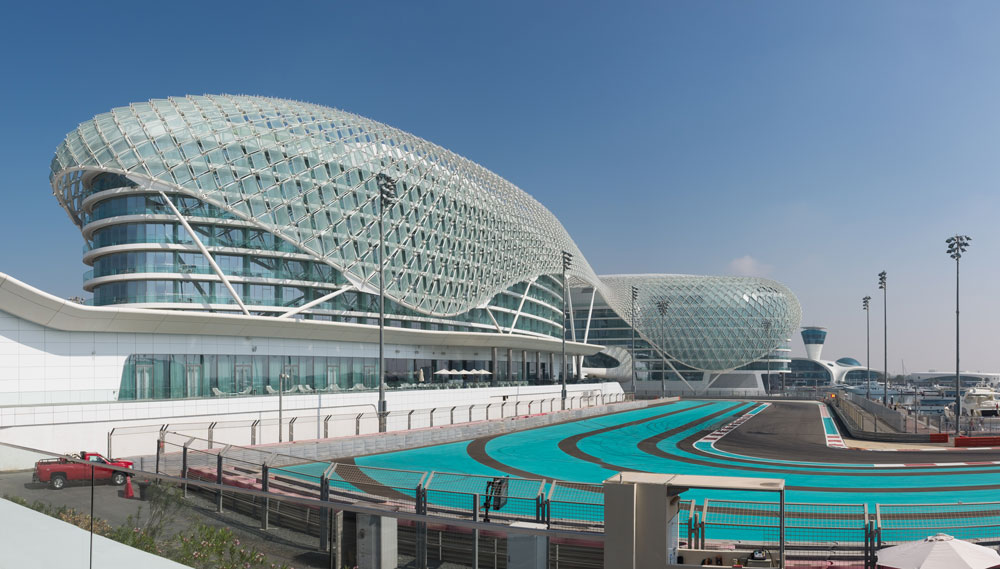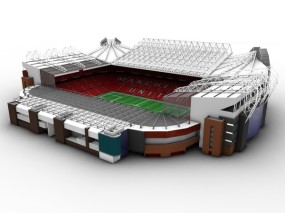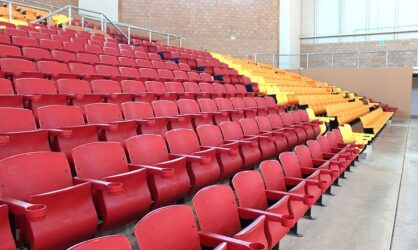 The phrase “green architecture” refers to the use of environmentally aware, sustainable architectural and construction methods. Today’s stadiums and arenas are often designed with a full embrace of this concept. Many professional sports organizations have publicly committed to the use of sustainable practices in the construction and utilization of arenas and other venues that they use.
The phrase “green architecture” refers to the use of environmentally aware, sustainable architectural and construction methods. Today’s stadiums and arenas are often designed with a full embrace of this concept. Many professional sports organizations have publicly committed to the use of sustainable practices in the construction and utilization of arenas and other venues that they use.
Green and sustainable stadium and arena design and construction often focuses on a number of definable objectives:
- Reduced water consumption
- Greater energy efficiency
- Sustainable energy production
- Waste management
- Reduction in the facility’s carbon footprint
These objectives are relevant during construction and as the venue is operated over the long-term. For example, even the means of transporting construction materials and heavy equipment to the site may be considered in an effort to reduce the carbon footprint of the project.
Cost/Benefit Analyses
Some may assume that the cost of environmentally-conscious design may be prohibitive. However, advances in green technology often make such an assumption incorrect. In today’s world, developers need to be aware of evolving technologies and techniques that are more environmentally friendly, They also need to understand that green design and construction may be appreciated or even expected by both the public and by public servants.
Therefore, project managers should incorporate the latest sustainable concepts into all aspects of the new stadium or arena. Proper research into ever-evolving green construction techniques will allow developers to take fully advantage of new technologies. At times, more conscientious effort is required to effectively incorporate sustainable methods into the project. Initial expenses early-on may lead to long-term savings and an enhanced public image.
Design Objectives
From the outset, the design team should seek to pursue initiatives and concepts that:
- Reduce energy consumption of all kinds
- Reduce carbon emissions and all other emissions
- Encourage local energy generation
- Reduce waste of all kinds
- Encourage recycling wherever possible
Again, one should not underestimate the potential for direct savings and reduced overhead over the life of the facility. This reality can prove to be very beneficial for the the operator of the venue, whether the operator be public or private.
Desirable Certifications
In the United States, LEED certification is increasingly desirable to project developers and venue operators alike. LEED certification specifies exacting standards that must be met. A successful effort results in a certification that communicates to everyone that the facility has been designed and operated with green concepts and principles at the forefront. In Europe, BREEAM certification is available to projects that are in compliance.
Oftentimes, professional sports organizations and even amateur governing bodies encourage the acquisition of such certifications as a matter of policy. Developers need to be fully aware from the outset of the environmental expectations of these organizations, as well as the expectations of local governments and the public. Then, consultants, designers and architects can work toward a common environmentral goal from the start.
Sustainability: Active and Passive Approaches
There are varied means by which sustainability goals may be achieved. Some are simply integral to good planning and design, while others employ technology to conserve energy and promote the sustainable use of resources.
Passive measures – Many passive means of achieving green goals are readily available to urban planners, project architects and others. These design ideas do not require the deployment of either technological or mechanical methods to be effective.
Examples of passive methods include shading areas from the sun through the use of screens or the special positioning of buildings, the deployment of cooling towers, the construction of thicker walls or the use of grass roofs. Once these things are done, they continue to save energy without the use of any added technology.
Active measures – Sustainability can also be promoted through the use of specific technological or mechanical systems to save energy by cooling and/or heating a structure more efficiently. Historically, energy-efficient systems have come with higher capital costs, but they have generated operational savings through lower energy cost. In turn, such systems have often successfully reduced the carbon footprint of a given facility.
Key Sustainability Concepts
Again, the maximization of sustainability benefits requires attention to solid concepts from the start. A stated emphasis on energy conservation, green architecture and sustainability should be a guiding principle from day one when a new entertainment or sports venue is being designed. Broadly speaking, concepts regarding sustainability in venue design are categorized under the headings of water, energy, materials and waste management.
Water
A more responsible use of water can accrue through both recycling and reduced use.
Availability – An adequate supply of water is not a given in every locale. There are drought-prone areas where a large new project must meet demanding standards for water conservation. In some settings, a new stadium must account for special on-site water treatment facilities in order to recycle this precious commodity.
Rainwater harvesting – The large roof areas and other horizontal surfaces that are often found at a new sports facility make the project more amenable to the harvesting of rainwater. At stadiums, rainwater is channeled off of roof areas and into storage tanks. Later, the water can be used for irrigation as needed. If water is in particularly scarce supply, rainwater can be treated and used for other important purposes. Any use of this naturally-occurring resource reduces overall energy and chemical use while promoting water conservation in the community.
Recycling – Gray water recycling can be important at larger venues. Water from showers can be re-used in toilets, for example. In some settings, the location of a local sewage treatment plant may allow the sports facility to draw the so-called gray water from the plant to service toilets and urinals.
Waterless urinals – urinals that make use of a trap insert can also conserve water. The special insert is filled with a special liquid rather than regular water. Waterless urinals are another more recent development in the quest for more sustainable water usage.
Energy
The opportunities for energy conservation are ubiquitous during design and construction and during operations in the years to come. Even the choice of location can positively impact energy usage requirements.
Transportation – Methods can be devised to encourage the use of public transport once the fans begin to arrive. Any reduction in the use of private vehicles quickly impacts the project’s carbon footprint. Emissions are reduced, fuel usage is reduced, and parking lot costs are reduced.
Building services systems – New projects can take full advantage of the tremendous inroads in HVAC system designs and efficiencies in recent years. Motors in such system are more energy-efficient than in the past. Air re-circulation methods reduce the heating and cooling requirements within a system.
Facades – Today, architects more fully understand that the choice of facades is more than a matter of aesthetics. Facades that possess excellent thermal insulation may be helpful in any effort to promote green architecture. The choice of the right materials can even improve the venue’s acoustics.
Evapotranspiration – The cooling, evaporative effect when wind blows through trees, shrubs and other plants can be significant when it is properly harnessed. The proper positioning of flora around the facility helps to cool the area in the summer as the wind circulates through these trees and plants. In the winter, the prevalence of sizable trees reduces the impact of strong prevailing winds.
Energy-efficient lighting – The evolution of LED lighting can dramatically impact energy usage such lights are deployed where incandescent and fluorescent lights were used in the past. Energy savings can often exceed 80 percent. Where more intense lighting is required, the evolution of newer, more energy-efficient sodium vapor lamps can be beneficial.
Natural light – Architects and designers have been increasingly mastering the use of natural light via skylights, solar tubes, etc. Any use of natural light to replace artificial light represents a 100-percent energy savings in that application.
Photovoltaic solar panels – Photovoltaic panels now can produce electricity far more efficiently than ever before. Maintenance costs are low, durability is good, and they create no pollution. Large expanses of roof panels may be excellent places on which to install solar panels.
Natural cooling and ventilation – Overhangs, louvers and other design elements can be employed to cool areas in a way that reduces dependence on artificial cooling. A well-ventilated area improves patron comfort with a minimum of AC usage. Humidity levels rise when large crowds congregate, and good ventilation can whisk some of this humidity away.
Wind energy – Along with solar panels, wind turbines are also becoming more efficient renewable energy sources. Such turbines tend to work best at some elevation above the surrounding countryside. Stadiums that are many stories high may benefit from the use of wind turbines on rooftops. Learn more.
Materials
Today, many building supplies are identified as coming from recycled materials. Some wood products will be certified as coming only from sustainable forests. Such materials should be selected wherever it is feasible.
Transportation of supplies – Any materials that can be locally sourced do not require as much transportation to the site. Locally produced materials thus reduce the carbon footprint of the project in yet another way.
Waste Management
A large, new venue will generate a large amount of waste during construction. The amount of waste should be minimized, and its disposal should be completed as efficiently as possible. Once operational, managers of the arena or other facility should provide for the separation of organic, recyclable and other waste. The efficient disposition of waste can further reduce the project’s carbon footprint.






